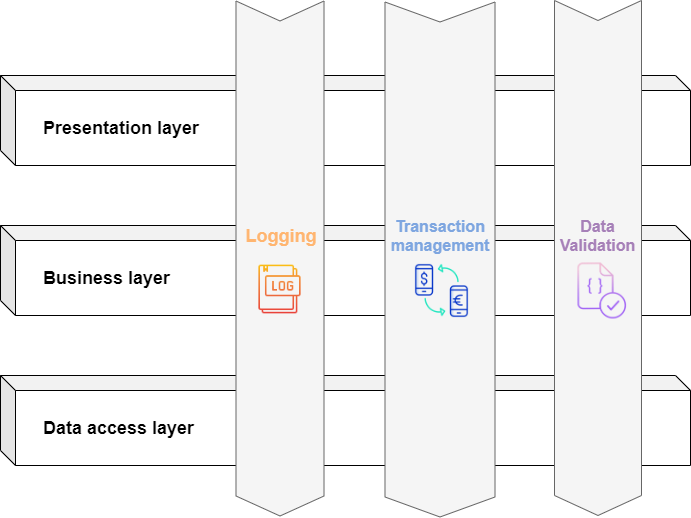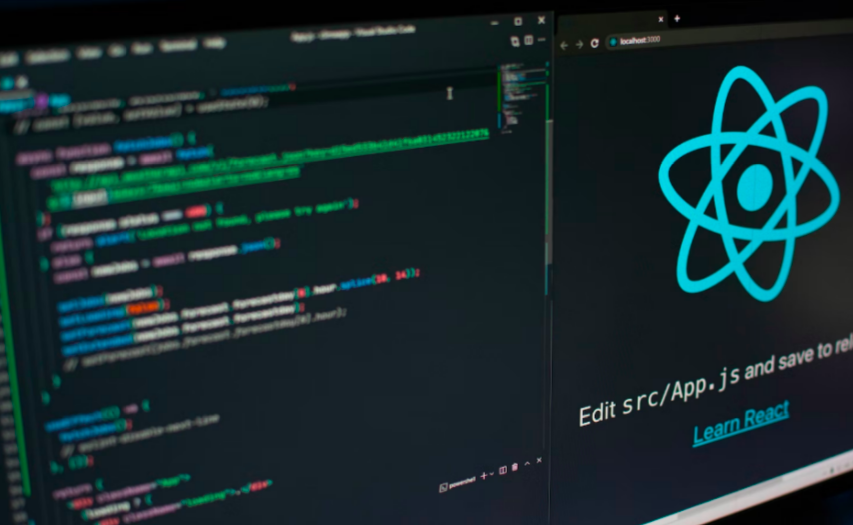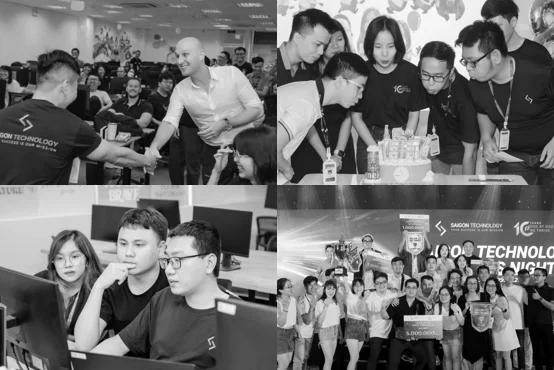Unveiling the Stages of a Software Outsourcing Project: A Comprehensive Guide


Embarking on a software outsourcing project is a strategic decision encapsulating a journey from conceptualization to realization.
The essence of the Software Development Life Cycle (SDLC) is eloquently captured in the assertion that its main idea has been "to pursue the development of information systems in a very deliberate, structured and methodical way, requiring each stage of the life cycle––from the inception of the idea to delivery of the final system––to be carried out rigidly and sequentially" within the applied framework.
This methodical strategy draws a wide range of companies to engage in outsourcing software development. The phases involved in the journey of software outsourcing include:
- Crafting the Blueprint: The Inception of Objectives and Requisites
- Choosing Your Ally: Navigating Through Models
- Navigating the Creation Course: Initiating the Development Voyage
- Ensurincase study of HealthTechg Excellence: The Rigorous Testing Phase
- Transition to Triumph: Deployment and Sustenance of Software
1. Crafting the Blueprint: The Inception of Objectives and Requisites
At the inception of a software development project, particularly in the realm of HealthTech, a meticulous gathering and delineation of goals and requirements is imperative.
This stage forms the bedrock of the project, setting a clear trajectory for the ensuing stages of a software project. By closely analyzing the needs, expectations, and scope, the project is aligned with the ultimate objectives, ensuring a well-orchestrated approach toward achieving the desired outcome.
Employing outsourcing software development services at this juncture can provide:
- A kaleidoscope of insights
- Ensuring the blueprint is both innovative and feasible
- Propelling the project toward a successful voyage
The goals and requirement gathering phase is pivotal, where executives craft a strategic roadmap by delineating the project's objectives and requisites. This roadmap lays down the foundation for the software development journey ahead.
It's imperative to clearly understand the project goals, target audience, and critical features before engaging with an outsourcing development service. This preliminary understanding aids in evaluating outsourcing partners more effectively, ensuring a good fit with the project's needs, and aligning the selection of the outsourcing model with the organization's internal capabilities.
2. Choosing Your Ally: Navigating Through Models
Selecting the apt outsourcing model is pivotal in metamorphosing a mere concept into a dynamic software reality. Each model unfolds unique advantages, meticulously crafted to cater to varying project demands and organizational frameworks.
Venture into this exploration to discover the model that echoes your project's core essence, steering you nearer to your envisioned software masterpiece.
- Time and Material Contracts:
Tailored for projects with evolving requirements, this model advocates flexibility and iterative progress. It accommodates changes efficiently, ensuring continuous alignment with the developing project objectives. This model is perfect for long-term projects where requirements may change over time.
Ideal for Businesses that:
- Require a more agile approach to software testing
- Value flexibility across projects and teams
- Need complete visibility of budgets and testing processes
- Staff Augmentation Model:
This model is ideal for businesses needing to bolster their teams with specialized expertise while retaining management control. It facilitates a seamless extension of your in-house team, integrating additional expertise effectively to accelerate project progress.
Ideal for Businesses that:
- Want extra assistance on a single or multiple projects
- Undergo seasonal fluctuations and expectations
- Have continuous or complicated projects
- Dedicated Development Team:
Suited for long-term projects, this model avails a dedicated team from the outsourcing partner to focus solely on your project. It fosters a collaborative environment conducive to achieving the project objectives, ensuring a focused and coordinated approach towards project completion.
Ideal for Businesses that:
- Need budget-friendly project solutions
- Require a long-term business partner with an expert web software testing team
- Want a dedicated team aligned to business goals
- Project-Based Model:
This model is tailored for projects with well-defined requirements and deadlines. It encapsulates all project deliverables from conceptualization to deployment, offering a turnkey solution. It's an excellent choice for businesses with clear project objectives seeking an end-to-end solution.
Ideal for Businesses that:
- Seek predetermined budgets and scopes
- Operate on extremely tight deadlines
- Have predefined objectives, project outlines, and milestones
- Fixed Price Model:
Ideal for projects with a well-defined scope and fixed budgets, this model establishes a fixed price for the entire project, promoting budget adherence and financial predictability. It eliminates financial surprises, ensuring a smooth execution within the defined budget.
Ideal for Businesses that:
- Have a limited, fixed budget
- Has a well-defined scope with resource limitations
- Wants a project with predictable costs
The structure of a project team in a software outsourcing venture is often multi-faceted, encompassing a variety of stakeholders, each bringing their unique expertise to the table.
It includes Software Developers who code the envisioned solution, QA Specialists who ensure the software's robustness, UX/UI Designers crafting the user interface and experience, and Project Managers orchestrating the workflow, guaranteeing timely delivery.
Each role is pivotal, contributing towards the project's seamless progression and eventual success, ensuring that every phase of development is executed proficiently, adhering to the predefined objectives and quality standards.
3. Navigating the Creation Course: Initiating the Development Voyage
As the stages of a software outsourcing project progress, initiating the development voyage is a pivotal stride. This stage propels the well-delineated blueprints into the active realm of coding and development. Embarking on this phase necessitates a robust strategy, ensuring every facet of the software development process is addressed proficiently.
In the HealthTech case study, for instance, this stage translates into a harmonized endeavor, where the envisioned functionalities start taking a definitive shape, inching closer toward a tangible software solution that resonates with the healthcare community's needs.
4. Ensurincase study of HealthTechg Excellence: The Rigorous Testing Phase
In the journey of software creation, testing is a vital stage that ensures the software's reliability, functionality, and readiness for deployment.
This stage meticulously scrutinizes the developed features and functionalities to ascertain if they meet the desired standards and expectations. The process encompasses the following types of testing:
- Unit Tests: Unit tests are crucial as they ensure that individual components or units of code operate correctly in isolation, thereby providing a solid foundation for the system's overall functionality and integrity.
- Integration Tests: These tests are conducted to assess the interaction between different components or systems, ensuring seamless communication and functionality when combined, which is pivotal for the software's reliability.
- Functional Tests: Functional tests aim to validate the software's behavior against predefined applicable requirements, ensuring it responds correctly to specific inputs and performs actions as expected, aligning with user requirements.
- End-to-end Tests: End-to-end tests evaluate the system's overall performance, ensuring all integrated components work harmoniously from start to finish, and comprehensively assess the software's functionality.
- Acceptance Testing: This testing phase confirms that the software meets the agreed criteria and is ready for deployment, ensuring alignment with client expectations and readiness for the market.
- Performance Testing: Performance testing involves assessing the software's stability, responsiveness, and speed under various conditions, ensuring robustness and reliability in real-world scenarios.
- Smoke Testing: Before diving into more detailed testing phases, smoke testing conducts basic tests to check the software's stability and major functionalities. It ensures readiness for further scrutiny and validation.
5. Transition to Triumph: Deployment and Sustenance of Software
The deployment stage is where the software, refined through rigorous testing, is transitioned into a live environment, ready to serve its intended users. Following deployment, maintenance ensures the software continues operating optimally, adapting to evolving requirements and resolving emerging issues.
The HealthTech case study exemplifies how engaging with the best software outsourcing companies can streamline this transition, ensure smooth deployment and subsequent maintenance, and establish a robust platform for continuous service delivery and value addition.
The Quintessence of Outsourcing: A Recap of the 5 Stages
Embarking on a software outsourcing journey encompasses five critical stages, each with its unique significance:
- Blueprinting Dreams: This stage entails meticulously gathering and delineating goals and requirements, setting a clear trajectory for the project.
- Choosing Your Ally: Selecting an appropriate model aligns the project with the best-suited external expertise.
- Embarking on Creation: The development phase translates the blueprints into actionable tasks, paving the way toward a tangible software solution.
- Ensuring Excellence: Rigorous testing is conducted to ascertain the software's reliability, functionality, and readiness for deployment.
- Transition to Triumph: Deployment transitions the software into a live environment, with maintenance ensuring its continuous optimum performance.
Engaging with proficient outsourcing partners across these stages augments the project's prospects of achieving its envisioned goals, embodying a symbiotic journey toward software excellence.
Steering Clear of Pitfalls: Best Practices for Outsourcing Mastery
Navigating the waters of a software outsourcing project requires a keen awareness of potential hurdles coupled with a toolbox of best practices. Let's explore common pitfalls that could obscure your project's path and elucidate tried-and-tested practices to adeptly maneuver through the outsourcing voyage.
By arming yourself with this knowledge, you're averting common missteps and embarking on a journey towards mastering outsourcing.
Potential Pitfalls to Avoid:
- Miscommunication: Craft a clear communication strategy to prevent misunderstandings that could derail the project.
- Undefined Objectives: A well-articulated vision is crucial. Ensure every goal and requirement is defined meticulously to prevent scope creep.
- Ignoring Cultural Differences: Embrace and respect cultural nuances to foster a harmonious working relationship.
Best Practices:
- Establish Clear Objectives: Set measurable objectives as your project's guiding light.
- Effective Communication: Engage in open, regular communication to foster alignment and promote collaborative synergy.
- Continuous Monitoring: Keep a close eye on the project's pulse, adapting strategies to ensure smooth sailing toward your goals.
- Leverage Technology: Utilize modern project management tools to streamline processes, foster real-time collaboration, and keep everyone on the same page.
Embark on your outsourcing journey with a vigilant eye, armed with best practices, to navigate the challenges and steer your project toward success.
Journey's End: Reflecting on the Outsourcing Odyssey
Navigating through the stages of a software outsourcing project is a nuanced endeavor, each stage propelling the project closer to the envisioned outcome. The collaborative synergy with adept outsourcing partners, the meticulous attention to detail, and the adaptive strategies employed at each juncture collectively contribute to the project's success.
This odyssey culminates in a robust software solution. It fosters a culture of continuous learning and improvement, heralding a promising avenue for future projects.







